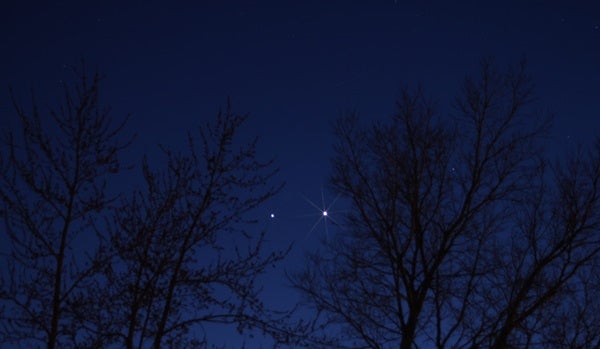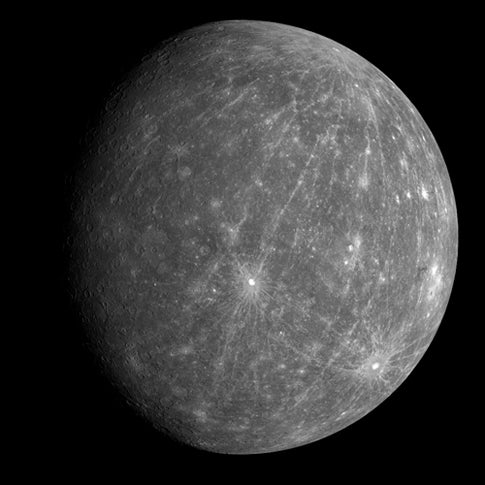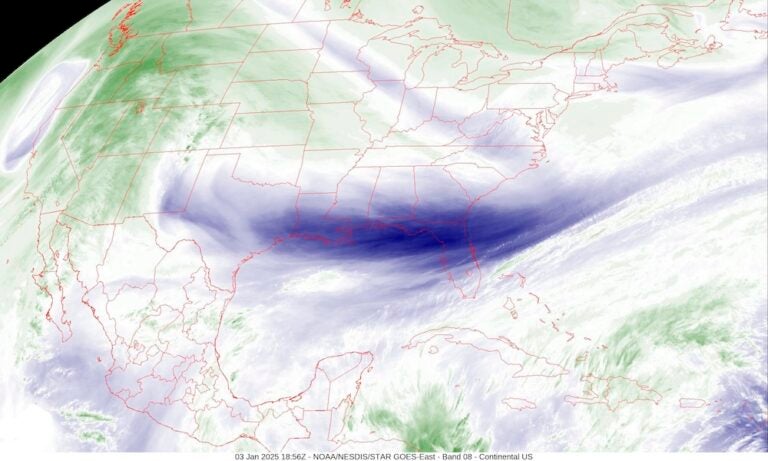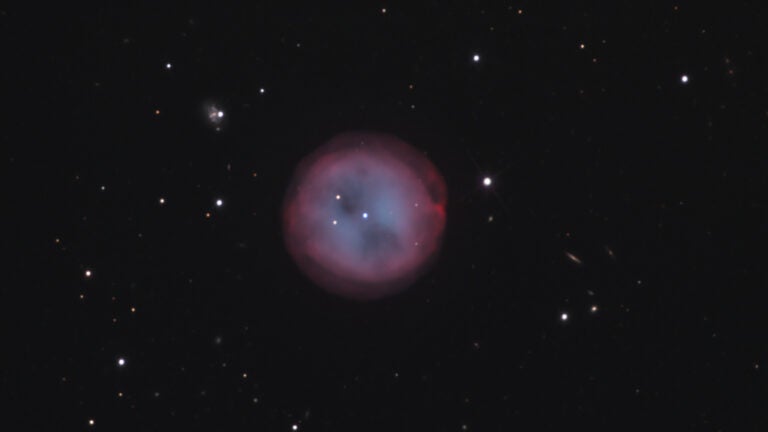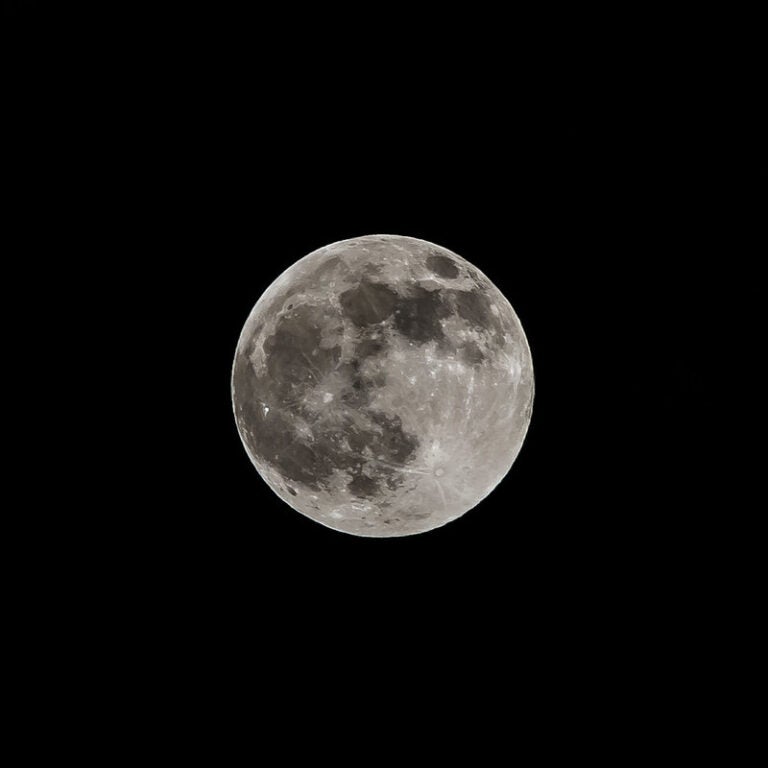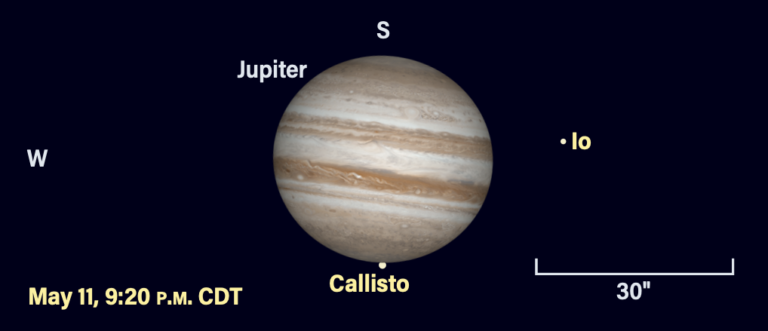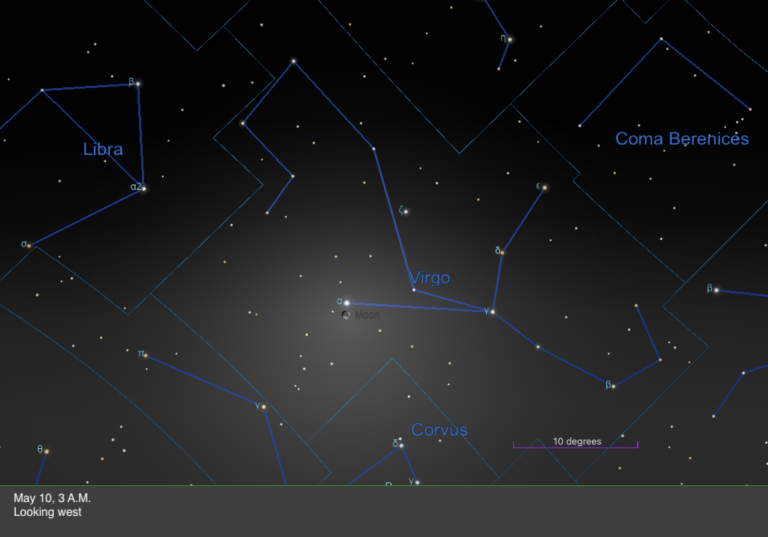The brightest evening “star” isn’t a star at all — it’s our sister planet, Venus. The dazzling point of light has been climbing higher in the western sky during the early evenings of February and March. Late this month, Venus will reach its greatest elongation, meaning the planet attains its greatest angle away from the Sun as seen from Earth. On March 27, Venus will lie 46° from the Sun and shine at magnitude –4.4.
“Look for Venus about 30° high in the west an hour after sunset,” says Astronomy magazine Senior Editor Richard Talcott. “It lies among the background stars of Aries, but you won’t need their help to spot the dazzling planet.”
Venus stands high in the sky in early spring because of the steep angle of the ecliptic — the apparent path of the Sun that the planets also closely follow.
March also holds the best planetary conjunction of the year. On March 15, magnitude –4.4 Venus appears less than 3° north of magnitude –2.1 Jupiter in the western sky. The pair lies 30° high an hour after sunset and doesn’t set until 11 P.M.
And just after the March 27 greatest elongation, Venus continues to dazzle with other companions. The planet begins April only 1° below the famous Pleaides star cluster (M45).
Venus will remain a brilliant beacon in the evening sky through the next few months. The next planetary conjunction to rival the one in March, however, won’t occur until October 2015. So, make sure to get outside and view the dazzling planets in the next few weeks.
Fast facts about Venus
- Venus orbits the Sun in 225 Earth days.
- Our sister planet is 7,521 miles (12,104 kilometers) in diameter, or 95 percent the size of Earth.
- The planet spins on its axis once every 243 days, but it spins in the opposite direction of Earth — on Venus, the Sun rises in the west and sets in the east.
- Venus’ atmosphere consists of thick sulfuric-acid clouds, which reflect sunlight extremely well.
- Venus has phases just like the Moon; you can see them even through a small telescope.
- Video: Easy-to-find objects in the 2012 spring sky, with Richard Talcott, senior editor
- StarDome: Locate Venus in your night sky with our interactive star chart.
- The Sky this Week: Get your Venus info from a daily digest of celestial events coming soon to a sky near you.
- Sign up for our free weekly e-mail newsletter.



